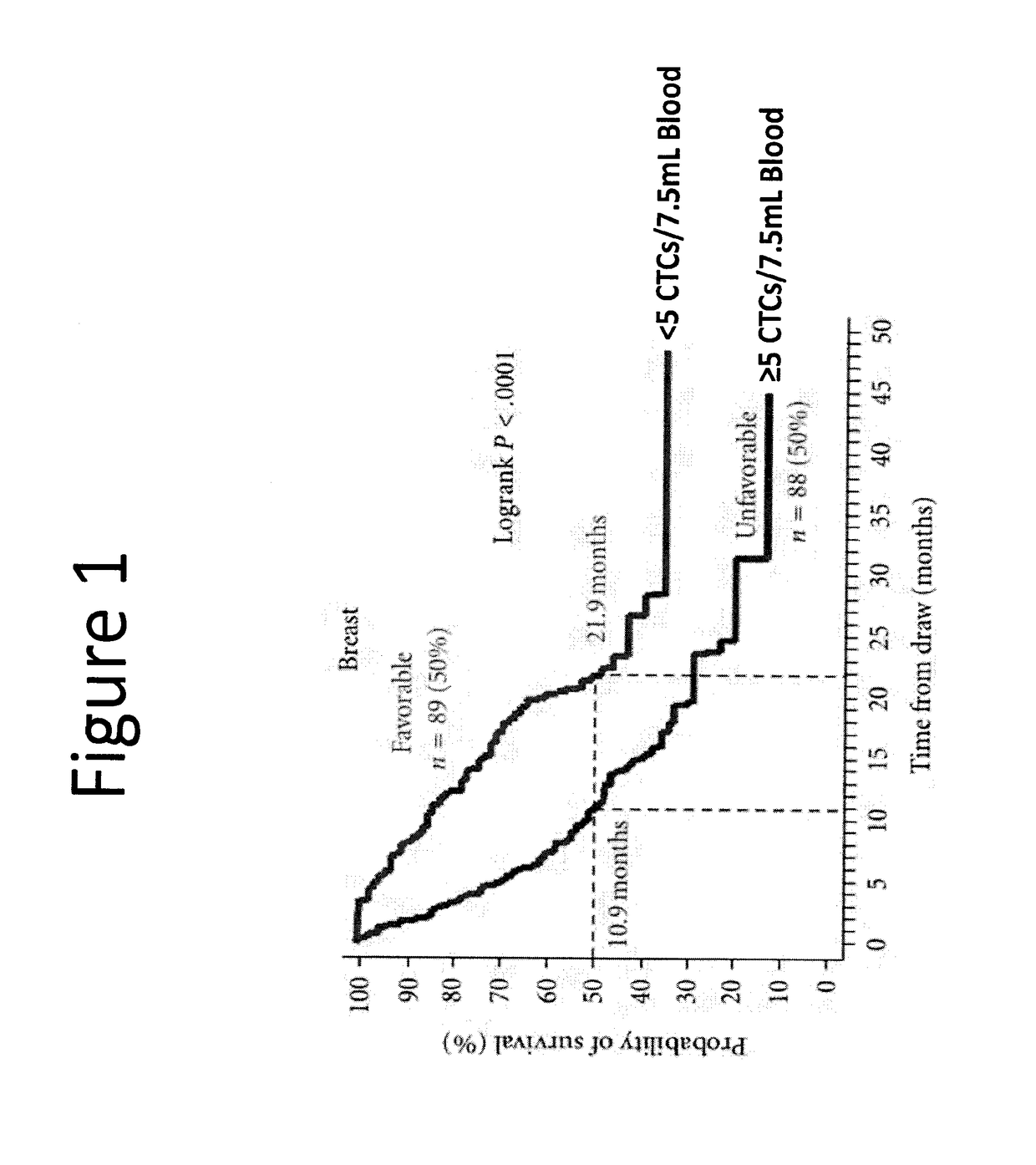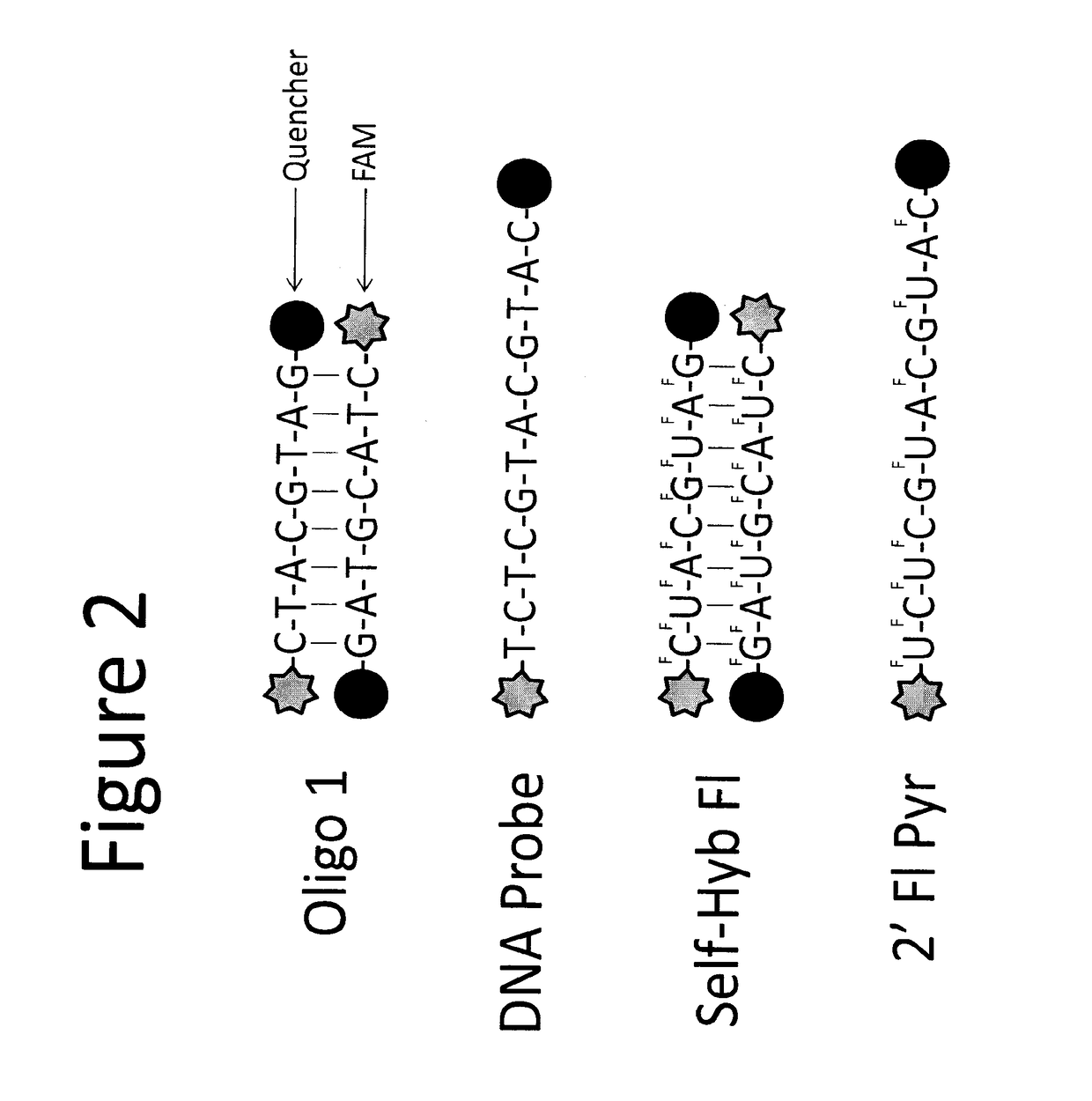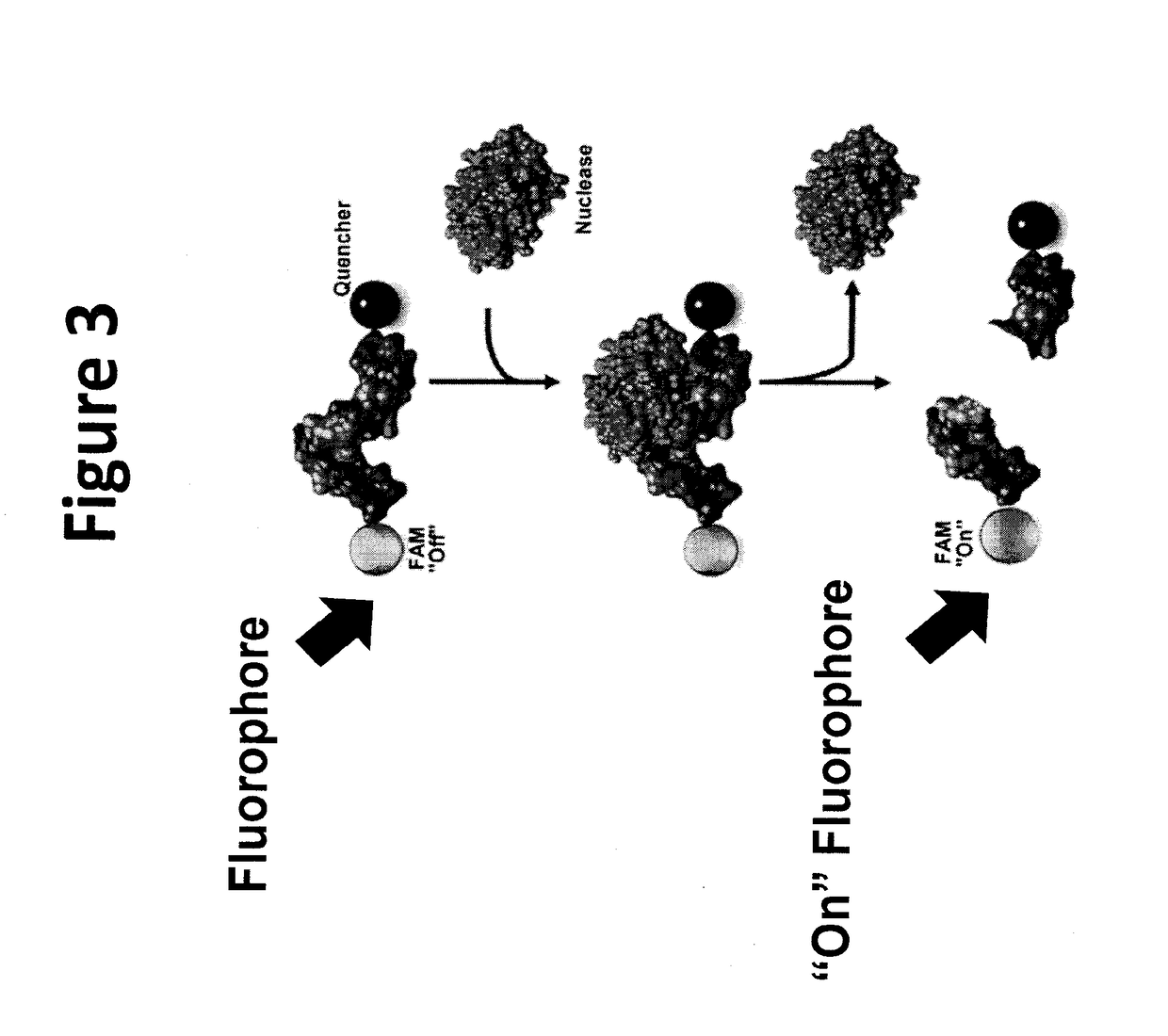Oligonucleotide-based probes for detection of circulating tumor cell nucleases
- Summary
- Abstract
- Description
- Claims
- Application Information
AI Technical Summary
Benefits of technology
Problems solved by technology
Method used
Image
Examples
example 1
Rapid and Sensitive Detection of Circulating Tumor Cells with Nuclease-Activated Oligonucleotide Probes
[0142]Metastatic breast cancer is the second leading cause of female cancer deaths in the United States. Despite substantial progress in its treatment, metastatic breast cancer remains incurable. Early identification of breast cancer patients at greatest risk of developing metastatic disease is thus an important goal that would enable oncologists to aggressively treat these patients while the cancer is still vulnerable. In addition, this would spare patients who do not need or would not benefit from further treatments from having to endure the harmful side-effects of chemotherapeutic drug regimens. Circulating tumor cells (CTCs) are rare cancer cells found in the blood circulation of cancer patients that provide a non-invasively accessible cancer cell specimen (liquid biopsy) from patients. The number of circulating tumor cells (CTCs) in cancer patients has recently been shown to b...
example 2
[0164]The sensitivity of the assay in blood is low due to background activity from blood cells (FIG. 14), which further confirmed the need for capturing / enriching CTCs from blood. CTCs can be enriched from blood using size exclusion filters. Two commercially available filters are the ISET filter from Rarecells and the filter from ScreenCell. The filter from ScreenCell was more effective at reducing the background signal from blood compared to the ISET filter (FIG. 15A). The variability in the background signal from blood derived from several healthy donors was examined (FIGS. 15 B and C). Fixed amounts of breast cancer cells were spiked in blood and process the mixture with the ScreenCell filters (FIG. 16A). It was possible to robustly detect 200 cancer cells spiked into 1 mL of blood, which was a 500 fold improvement in sensitivity over no filtration. The probes were validated in blood from patients with stage IV breast cancer. The probe used in this example was the dsDNA probe (FI...
example 3
[0165]Experiments were performed to evaluate nuclease activity in supernatants from cancer cell lines. Secreted nuclease active was measured in contrast to intracellular nuclease activity. Experiments were performed to demonstrate that the ssDNA and 2′F-ssRNA nuclease activated probes were activated by secreted nucleases from breast cancer cells (FIGS. 19A-D and 20A-C). The data show that the probes can be used to detect nucleases that are secreted from CTCs in blood of breast cancer patients.
[0166]Although the foregoing specification and examples fully disclose and enable the present invention, they are not intended to limit the scope of the invention, which is defined by the claims appended hereto.
[0167]All publications, patents and patent applications are incorporated herein by reference. While in the foregoing specification this invention has been described in relation to certain embodiments thereof, and many details have been set forth for purposes of illustration, it will be a...
PUM
| Property | Measurement | Unit |
|---|---|---|
| Area | aaaaa | aaaaa |
| Nanoscale particle size | aaaaa | aaaaa |
| Nanoscale particle size | aaaaa | aaaaa |
Abstract
Description
Claims
Application Information
 Login to View More
Login to View More - R&D
- Intellectual Property
- Life Sciences
- Materials
- Tech Scout
- Unparalleled Data Quality
- Higher Quality Content
- 60% Fewer Hallucinations
Browse by: Latest US Patents, China's latest patents, Technical Efficacy Thesaurus, Application Domain, Technology Topic, Popular Technical Reports.
© 2025 PatSnap. All rights reserved.Legal|Privacy policy|Modern Slavery Act Transparency Statement|Sitemap|About US| Contact US: help@patsnap.com



